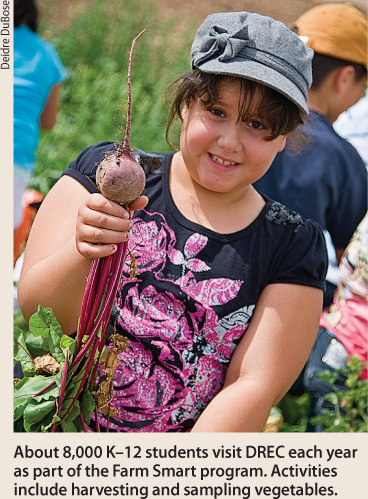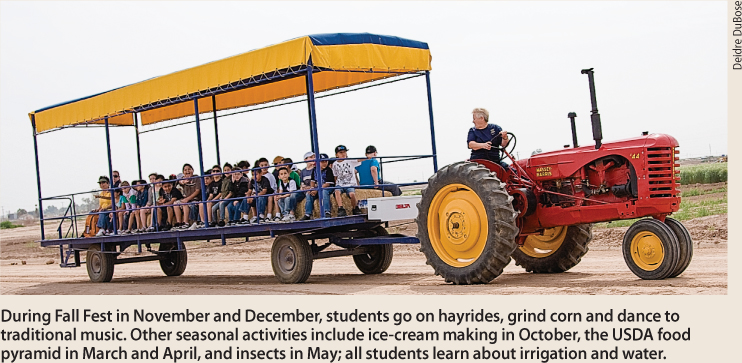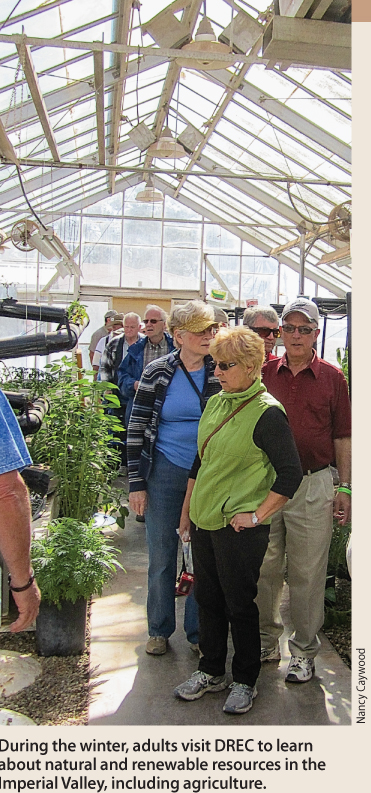All Issues
Sidebar: Farm Smart offers hands-on experience, insight into where food comes from
Publication Information
California Agriculture 66(4):124-124.
Published online October 01, 2012
PDF | Citation | Permissions
NALT Keywords
Full text
One of the highlights of UC DREC is an agricultural education program called Farm Smart, which was developed by former elementary school teacher Nancy Caywood. Also a farmer's daughter, Caywood got into agricultural literacy when she asked her 1st- and 2nd-grade students where food came from. “They said ‘from the grocery store’ and that really bothered me,” Caywood recalls. “So I asked if I could bring my kids to the farm.” The resulting field trips prepared Caywood for her next career as the Farm Smart outreach coordinator at UC DREC.
About 8,000 K-12 students visit DREC each year as part of the Farm Smart program. Activities include harvesting and sampling vegetables.
Established in 2001, Farm Smart provides K-12 agricultural outreach and education programs for just $3 per student. Funding also includes $50,000 annually from the Imperial Irrigation District as well as support from the Imperial County Farm Bureau and local seed companies. “The community makes this happen,” Caywood says.
With a team of volunteers that includes her husband, Alan Robertson, Caywood offers more than 150 daylong agricultural education programs to nearly 8,000 students each year. The curriculum is aligned with the content standards for California public schools, covering topics including health and nutrition, bees and pollination, and natural and renewable natural resources. Designed to be fun as well as informative, the programs emphasize hands-on activities, from harvesting and eating winter crops to milking artificial cows and making butter, and also include hayrides and sing-alongs.
Participants learned about soil types by playing interactive games led by Farm Smart outreach coordinator Nancy Caywood (center).
During Fall Fest in November and December, students go on hayrides, grind corn and dance to traditional music. Other seasonal activities include ice-cream making in October, the USDA food pyramid in March and April, and insects in May; all students learn about irrigation and water.
During January and February, Caywood offers a similar outreach program to the “snowbirds,” retirees who flock from cold climates to the Imperial Valley. Called the Winter Visitor program, this Farm Smart component enrolls about 3,000 participants.
During the winter, adults visit DREC to learn about natural and renewable resources in the Imperial Valley, including agriculture.
“Most people just don't know much about agriculture,” Caywood says. “We help them learn where their food comes from.”








